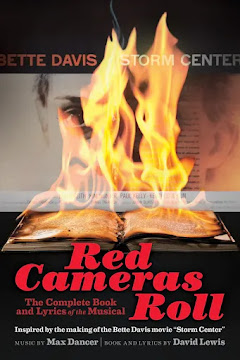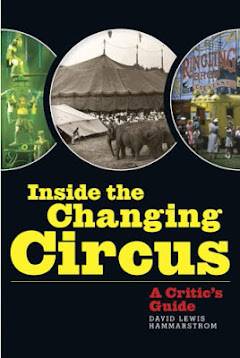Proudly he stands, top of the photo, my Uncle Smity (William Smit), directly above park owner George K. Whintey, with Whitney's son, George, Jr. to Uncle Smitty's left. This revelatory photo, new to my eyes, appeared in a great new book by James. R. Smith about the history of the park, Playland at the Beach: The Early Years (and a second volume, The Golden Years). And it shows me how important a figure was my uncle to the Whitney brothers, who owned and operated Playland as one of the classiest amusement parks in the nation.
Up goes the Big Dipper, 1922. It only took them a few weeks. Uncle Smitty, who at the time was managing the Merry-Go-Round, took on management of the Big Dipper as well, a position he held for the ride's entire career. It came down in 1956.
A great coaster it was. It's most thrilling drop was the second one, seen below, which traversed the entire length of the ride. I took this shot when Uncle Smitty invited me, one day before the ride opened, to go inside and walk around.
This horrendous second dive gave you a feeling that you were crashing down into and through a forest of white lumber! Nothing in any other coaster I have sampled could quite compare.
Dangerous Walk: My Uncle Jack, one day while working on the track before the Big Dipper was about to open, did not hear the first train coming down the first dip, and was struck by the first car, resulting in his left leg having to be amputated. Uncle Smitty once told me that, during the lifetime of the Dipper, some ten or eleven people were killed (or injured), if I heard him right. Almost always from some reckless punk standing up in a car to show off.
1949: Playland thrived weekends and holidays, the park and beach drawing up to 50,000 people a day. Its best years were the war years. Sometimes the sun actually came out! To the far left, above, you can see Skateland-at-the-Beach. A great roller rink. After heating up our bodies rolling round and round for a couple of hours, we exulted, upon exit, in the fresh salt air! Walked down the street to the pie shop for a sit down, to eat and gossip and laugh.
You can see the Dutch Windmill in the distance, beyond the Big Dipper. And beyond the Dutch, there's the Murphy.
It's all gone today, replaced by architecturally sterile condos and a large Safeway. How insultingly drab for a world class city of rare charms.
On many days, the chronically pervasive fog made Playland a grey land
 | ||||||
A fun house like NONE OTHER: Was there ever one to match Playland's? You think that's the slide? No, that's the little slide. Look below. We ran up over rambling boards to reach the top of the Great Slide, hustled our bodies onto gunny sacks and careened down like giddy birds in low flight. I've been to Coney, and to the others. I've looked at photos and You Tubes, and have never found a fun house so generously endowed with so many amusing things to do.
When it opened, the failed to slide right. Too George Whitney went my Uncle Smitty, thinking he could fix the problem. Please, go ahead, said George. In short order, the slides worked.
The Laff in the Dark did not circle around inside a single dark room or expanded carny
truck, but followed a long snake-like tunnel, so that you
had a true feeling of actually moving through a spooky tunnel. My father, an electrician, installed many of the scare devices -- skeletons that popped out, the sound of crashing dishes as the car pushed through a door.
Such a dreary midway it was under the ocean fog. But that did not stop us from going. Open every day, noon to midnight, they advertised. On cold damp nights, the crowd(s) retreated, I assume, under cover at the games, and inside the fun house, where you could stay as long as you wished. We ran up wobbly stairs, gazed at our distorted figures in crazy mirrors, rode rocking horses and dared walking through the barrel of fun.
If you are interested in the history of Playland, I can't recommended Mr. Smith's books enough. I once harbored half a desire to write a history myself; I could never have brought off what Smith has so magnificently achieved -- his two books are deliciously rich and thorough in photos, coverage, design drawings and more.
Many in my father' side of the family worked at Playland. The woman, below, in the overcoat is my Aunt Olga, who married Uncle Smitty. For a time, the two lived over the Merry-Go-Round. They ended up owning their own home only two blocks away.
And here, below, is another photo of Uncle Smitty, during Playland's declining years. Such a true gentleman whenever I paid him and Aunt Olga a visit. Best of all, just as I was about to leave, he would always rise from his chair, walk over to a closet in the hall, reach up and take down a strip of free tickets to all the rides! Among his many talents, he kept the mechanical organs and instruments on the Merry-Go-Round tuned up and going. From Holland, he was a quiet-spoken and even tempered man, far closer to an engineer than to a midway barker.
Many great cities have retained their amusement parks. Sadly, not San Francisco.








































2 comments:
What an enviable place to grow up! Thanks for posting these fantastic pictures.
talk about a sensory overload!
Post a Comment